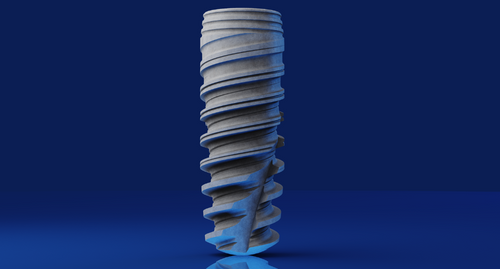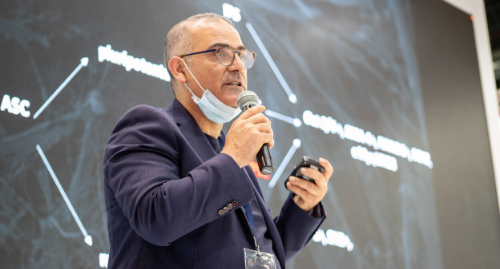When Per-Ingvar Brånemark (1929-2014) discovered osseointegration, he was investigating something slightly different: blood microcirculation in the bone marrow.
For this study, carried out on rabbits, he developed a system consisting of a titanium cylinder with a small optical camera that, inserted into the rabbit’s femur, would help him see the blood circulation in the bone.
After several months, and once the study was completed, Brånemark wanted to retrieve the microcamera for reuse in another project, but when he tried to remove it, he had a surprise: he was unable to separate it from the bone because it had attached itself to the bone.
Brånemark called this process of integration between titanium and bone “osseointegration“.
So how did he come up with the idea of using titanium for this? The choice of material was also a matter of chance. One of his colleagues at Lund University, Hans Emneus, told him about “a new material coming from Russia that he was testing in hip prostheses”. It was titanium.
However, and as Brånemark himself clarified in one of his last interviews, despite the undoubted importance of the material, the real question was “why the body did not reject it”, and this is where he had a lot to contribute.
The first fields in which he applied osseointegration after discovering it were orthopaedics and plastic surgery, until he realised its potential in oral dentistry and joint and limb prosthetics.
After 10 years of animal testing, he finally developed a technique that ensured acceptance of the implant by the body: “We couldn’t just apply it to people; there were already rudimentary implant techniques that didn’t work very well, and we didn’t want ours to be another failure,” he said.
Per-Ingvar Brånemark, the father of modern dental dentistry
Thanks to this discovery, Brånemark, who is now known as the «father of modern implant dentistry», received numerous awards, among them:
- Swedish Society of Medicine Soederberg Prize.
- Medal of the Swedish Academy of Engineering for Technical Innovation.
- Harvard School of Dental Medicine Distinction.
- Honorary Fellowship of the Royal Society of Medicine in the United Kingdom.
- Honorary Doctorate from the Universidad Andrés Bello Chile.
- Doctor Honoris Causa from the European University of Madrid.
- European Inventor Award 2011 in recognition of a lifetime of research and clinical work.
It has also earned him two Nobel Prize nominations, a nomination for the Prince of Asturias Award and more than 30 honorary positions throughout Europe and North America.




